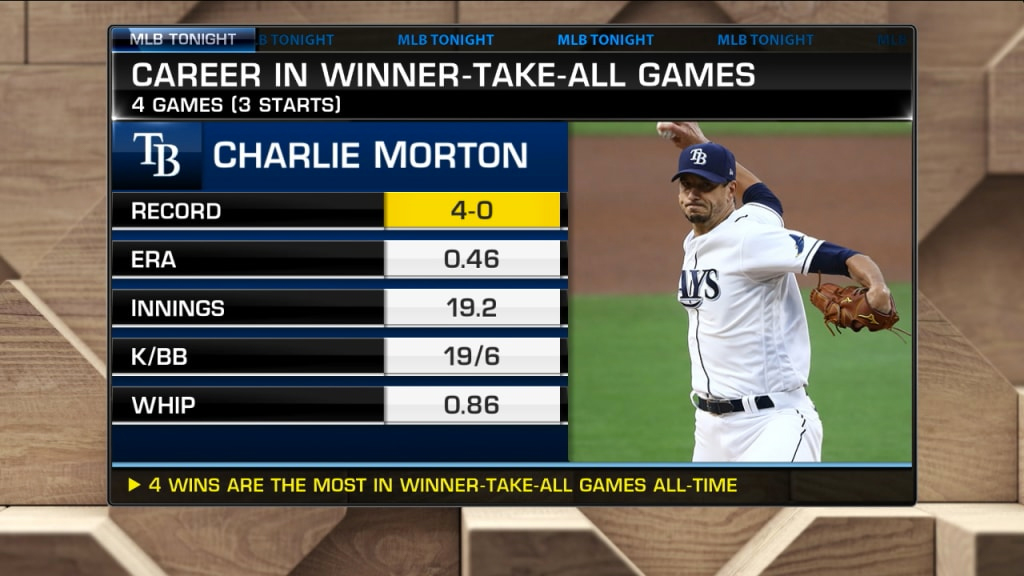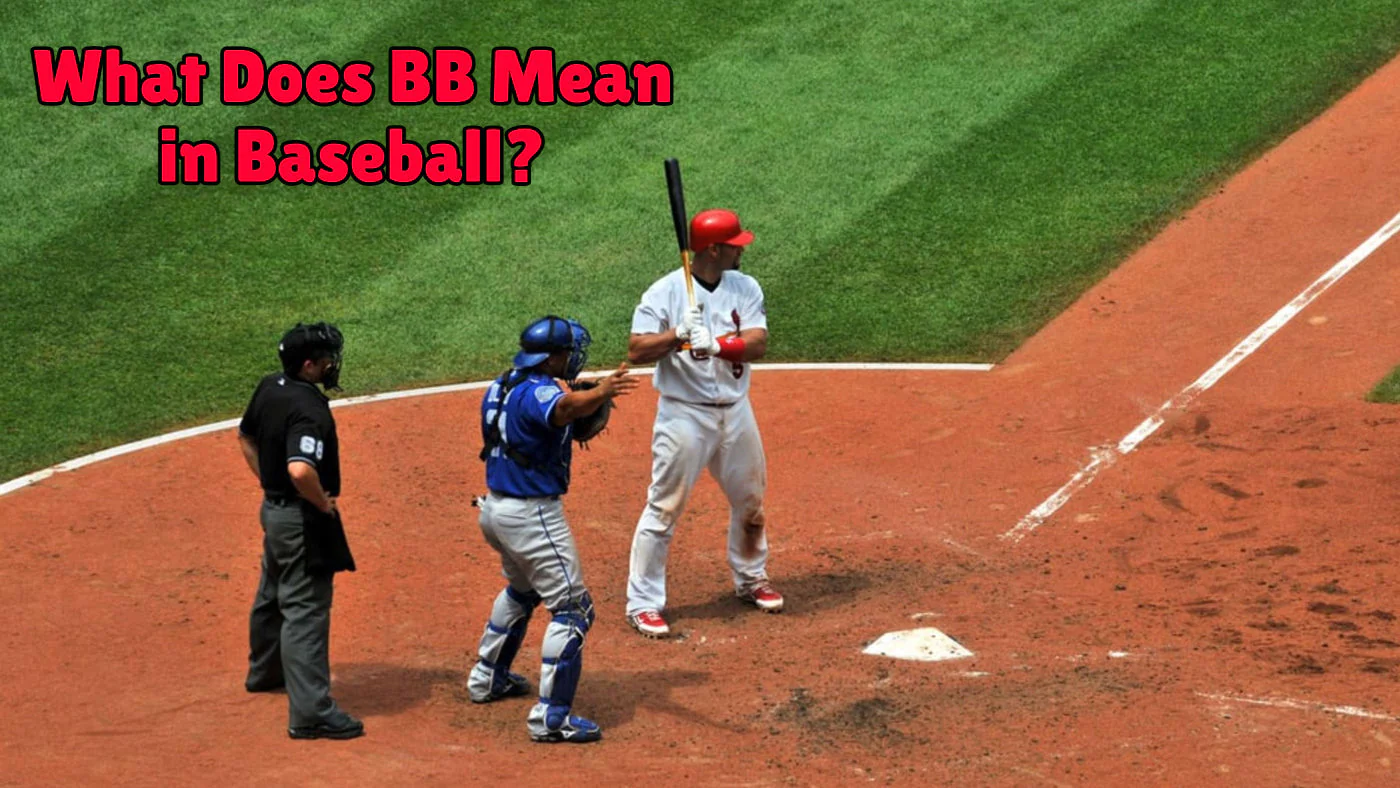BB in baseball stands for “base on balls.” It means a batter gets to walk to first base after four balls from the pitcher.
This rule can change the game’s dynamics. In baseball, BB or base on balls plays a crucial role. It’s not just about hitting home runs or making spectacular catches. A base on balls can be a strategic move, helping a team score runs without swinging the bat.
Understanding BB helps fans appreciate the game’s depth. This blog will dive into what BB is, how it works, and why it’s important. Whether you’re a new fan or a seasoned follower, knowing about BB will enhance your enjoyment of baseball. Stay tuned to learn more about this essential part of the game.

Credit: www.gaimday.com
Introduction To Walks In Baseball
Baseball is a game of strategy and skill. One key element is the walk, also known as BB. Walks play a crucial role in the dynamics of a baseball game. They can change the course of innings and games.
Definition Of Bb
BB stands for Base on Balls. It occurs when a pitcher throws four balls outside the strike zone. The batter then gets to walk to first base. This can happen without the batter swinging the bat. Walks help a team by putting a runner on base.
Historical Background
The concept of walks has been around since the early days of baseball. In the 19th century, the rules of walks were different. At first, it took nine balls for a walk. Later, it changed to four balls. This rule change made games faster and more exciting. Walks have since become a key part of baseball strategy.
Rules Governing Walks
The rules governing walks in baseball are important for understanding the game. A walk, also known as a base on balls (BB), occurs when a batter receives four balls. This allows the batter to advance to first base without the risk of being put out. Walks can impact the game significantly, influencing the strategy and outcome.
Pitch Count And Walks
Pitch count plays a key role in walks. Each pitch thrown by the pitcher falls into one of two categories: a ball or a strike. If the batter gets four balls, they earn a walk. Pitchers aim to avoid walks by throwing strikes.
The count of balls and strikes is crucial. A 3-0 count means the batter is one ball away from a walk. A full count (3-2) is equally critical. Both the pitcher and batter face high stakes. The pitcher must avoid a walk, while the batter hopes for that fourth ball.
Strike Zone And Umpire’s Role
The strike zone is an imaginary box over home plate. It extends from the batter’s knees to the midpoint of their torso. Pitches within this zone are strikes. Pitches outside this zone are balls. The umpire judges whether each pitch is a ball or a strike.
The umpire’s role is vital in determining walks. Their calls on balls and strikes can influence the game’s flow. Consistency in calling the strike zone ensures fairness. Both pitchers and batters rely on the umpire’s judgment to guide their actions.
Types Of Walks
In baseball, a walk, often referred to as a “base on balls” or BB, occurs when a batter receives four balls and advances to first base. Walks come in two types: Intentional Walks and Unintentional Walks. Both are crucial in the game, influencing strategy and outcomes.
Intentional Walks
An Intentional Walk happens when the pitcher deliberately throws four balls outside the strike zone. The aim is to avoid pitching to a strong hitter. The catcher usually signals for the walk by standing and extending an arm. This type of walk is more common in situations where the batter could significantly impact the game. For example:
- When a powerful hitter is at bat
- When first base is open
- To set up a potential double play
Unintentional Walks
An Unintentional Walk occurs without the pitcher’s deliberate intent. It results from the pitcher missing the strike zone four times. This type of walk can happen due to:
- Poor control or command
- Fatigue
- Pressure situations
Unintentional walks are common and can turn the tide of an inning.
Both types of walks affect the game’s flow and strategy. They also impact a pitcher’s stats, such as ERA (Earned Run Average) and WHIP (Walks plus Hits per Inning Pitched).
Strategic Use Of Walks
Walks, or bases on balls (Bb), can be a strategic tool in baseball. Both pitchers and batters use walks to gain an advantage. Understanding the strategy behind walks can improve a team’s chances of winning. Let’s explore the strategic use of walks from both perspectives.
Pitcher’s Perspective
Pitchers use walks to avoid giving up a hit to a strong batter. If a batter is known for hitting home runs, a walk can seem like the safer option. This strategy also helps in setting up double plays. By intentionally walking a batter, the pitcher can create a force-out situation. This makes it easier to get two outs with one play. Pitchers also use walks to control the pace of the game. It allows them to reset and regain focus.
Batter’s Perspective
Batters use walks to reach base without risking an out. A walk can be a smart choice if the pitcher is struggling with control. It forces the pitcher to throw more pitches, increasing their fatigue. This can lead to more mistakes and better hitting opportunities for the team. Walks also put pressure on the defense. With a runner on base, the defense must stay alert. This creates more scoring opportunities. Batters with a keen eye can draw walks, turning the pitcher’s strategy against them.
Statistical Analysis
Statistical analysis in baseball helps understand a player’s performance. By examining specific metrics, we can gauge a player’s effectiveness. One such metric is BB, or Base on Balls, commonly known as a walk. Walks are significant in the game. They can influence a player’s on-base percentage and overall performance.
Walks And On-base Percentage
Walks play a vital role in calculating on-base percentage (OBP). OBP measures how often a player reaches base. The formula for OBP is (Hits + Walks + Hit by Pitch) / (At Bats + Walks + Hit by Pitch + Sacrifice Flies).
Walks increase a player’s OBP without affecting their batting average. This makes walks valuable. A higher OBP means more opportunities to score runs. Teams value players with high OBP for this reason.
Walks And Player Performance
Walks also impact a player’s overall performance. They show a player’s patience and ability to read pitches. Players with many walks force pitchers to throw more pitches. This can tire pitchers and lead to mistakes.
Walks can also affect a player’s slugging percentage (SLG). Though walks don’t count as hits, they put players on base. This can lead to more scoring chances for the team. A player who walks often is seen as disciplined and valuable.
In summary, walks are crucial in baseball. They improve on-base percentage and reflect a player’s skill. Teams and analysts pay close attention to this statistic.
Impact On Game Dynamics
Base on Balls (BB), also known as a walk, can significantly impact game dynamics in baseball. This impact can be seen in both pitching and offensive strategies. Understanding the role of BBs is crucial for both players and fans.
Influence On Pitching Strategy
Pitchers aim to avoid giving up BBs. Walks can lead to higher pitch counts. More pitches mean more fatigue. Fatigue can result in more mistakes.
To prevent walks, pitchers may throw more strikes. This can lead to more hits. It’s a fine balance. Too many strikes can be risky. Too many walks can also be costly.
Pitching coaches track BBs closely. They adjust strategies based on this data. A high BB rate can lead to changes in the rotation or even bullpen usage. Here’s a simple table showing the impact:
| BB Rate | Strategy Adjustment |
|---|---|
| High | More bullpen usage |
| Low | More reliance on starting pitchers |
Effect On Offensive Strategy
Walks are valuable for the offense. A BB allows a batter to reach base without a hit. This can build momentum for the team. It puts pressure on the pitcher and the defense.
Teams with high BB rates often score more runs. They have more base runners. This can lead to more opportunities to score. Here are some key benefits:
- Increased chances of scoring
- Higher pitch counts for the opposing pitcher
- More pressure on the defense
Offensive coaches encourage patience at the plate. They train players to recognize balls and strikes. This can lead to more BBs and a stronger overall offense.
Famous Walks In History
In baseball, a walk (or a base on balls, BB) is a significant event. It occurs when a batter receives four pitches outside the strike zone. Famous walks have shaped the history of the game. These moments are remembered by fans and players alike.
Memorable Moments
One of the most memorable walks happened in the 2004 ALCS. The Boston Red Sox were down three games to none against the New York Yankees. In Game 4, Kevin Millar drew a crucial walk in the ninth inning. This set the stage for a historic comeback.
Another unforgettable moment was Barry Bonds’ walk in 2002. Bonds was intentionally walked with the bases loaded. This rare event showed the respect pitchers had for his hitting ability.
Legendary Players
Some players are known for their ability to draw walks. Ted Williams is one of these legends. Williams had an incredible eye for the strike zone. He walked over 2,000 times in his career.
Rickey Henderson is another legend in this category. Henderson holds the record for most walks in a career. His ability to get on base made him a valuable player for any team.
Lastly, Babe Ruth was also a master of the walk. Known for his powerful hitting, Ruth also had a keen sense of the strike zone. His walks contributed significantly to his team’s success.

Credit: teamfanfares.com
Training To Improve Walks
Improving walks in baseball is crucial for both pitchers and batters. Walks, or bases on balls (BB), can greatly influence a game’s outcome. Training to improve walks involves specific drills and techniques. These help pitchers reduce walks and batters increase them.
Pitcher Drills
Pitchers need to focus on control and accuracy. Here are some effective drills:
- Balance Drills: Maintaining balance ensures consistent delivery. Practice pitching while standing on one leg.
- Target Practice: Place targets at different locations in the strike zone. Aim to hit these targets consistently.
- Bullpen Sessions: Simulate game situations. Practice pitching under pressure to reduce walks during actual games.
Batter Techniques
Batters can improve walks by mastering several techniques. Key focus areas include:
- Plate Discipline: Recognize pitches early. Avoid swinging at pitches outside the strike zone.
- Pitch Recognition: Study pitchers’ habits. Understand pitch types and speeds to make informed decisions.
- Stance and Position: Maintain a balanced stance. Be ready to react quickly to pitches.
Both pitchers and batters must practice regularly. Consistent practice leads to better performance and more walks.
Future Of Walks In Baseball
The future of walks in baseball is an exciting topic for fans and players alike. The game continues to evolve, and walks are no exception. New technology and rule changes may transform this aspect of the game.
Technological Advances
Technology plays a big role in baseball today. Advanced tracking systems provide detailed data on pitches and swings. These systems help players improve their skills. They also help umpires make better decisions. Automated strike zones may become common. This could change the way walks are called. Players and fans might see fewer errors. Technology could make the game fairer and more accurate.
Potential Rule Changes
Baseball rules have changed many times over the years. New rules could affect walks in the future. One idea is to change the number of balls needed for a walk. This might speed up the game. Another idea is to adjust the strike zone. A smaller or larger zone changes the number of walks. These changes could make the game more exciting. They could also make it more challenging for pitchers and batters.
Frequently Asked Questions
What Does Bb Mean In Baseball?
BB stands for “Base on Balls” in baseball. It occurs when a batter receives four balls from the pitcher, allowing them to advance to first base.
How Is A Walk Calculated In Baseball?
A walk, or BB, is calculated when a batter receives four balls during their at-bat. The batter then advances to first base.
Why Is Bb Important In Baseball?
BB is crucial because it allows a batter to reach base without hitting the ball. It can change the game’s momentum.
Does Bb Affect A Player’s Statistics?
Yes, BB impacts a player’s On-Base Percentage (OBP). A higher BB count often indicates a disciplined batter with a good eye for pitches.
Conclusion
Understanding BB in baseball is crucial for appreciating the game. Walks can change the course of an inning. They test a pitcher’s control and a batter’s patience. Next time you watch a game, notice the impact of BB. It’s more significant than it seems.
Keep learning and enjoy the beautiful game of baseball.





